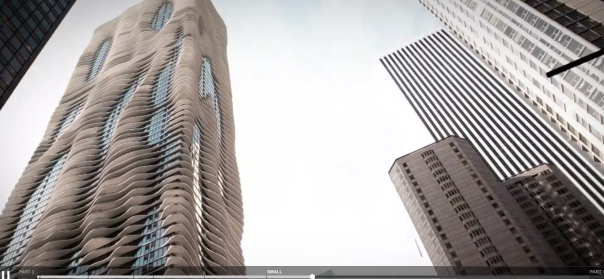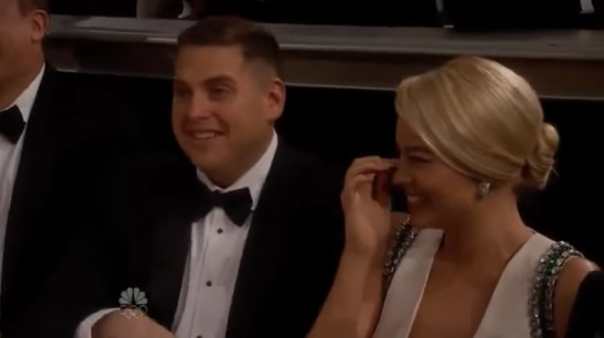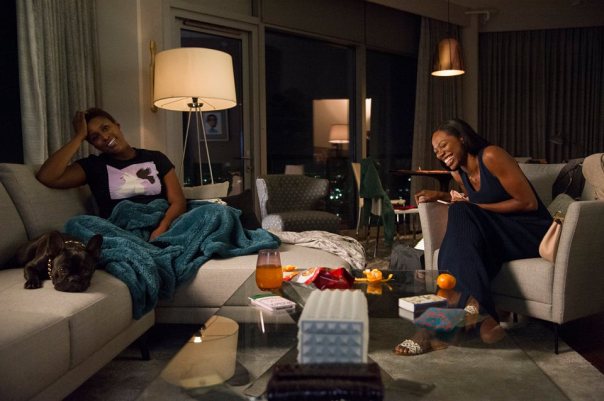“Segregation Now: The Resegregation of America’s Schools” uses a family and historical context to show how segregation in schools has evolved. Although legislators put laws in place to integrate schools across America, some school districts have begun to resegregate. “Segregation Now” successfully used several multimedia storytelling tools, including text and photos, charts and maps, social media, interactivity and a narrative style to tell this important story.
TEXT, PHOTOS, VIDEOS
The article is very lengthy at 9624 words. The publishers use different text styles and photos to break up the text. The authors used different sized fonts to chunk the text. They magnified significant quotes as a way of differentiating text as well. “When you chunk text, you break down what may have started as one really long article into smaller, manageable, more easily understood blocks of text,” said Kivi Leroux Miller in “The Art of Chunking: An Online Writing Essential.” Reading the article does not feel monotonous due to the chunking of the text.
It almost is on the verge of becoming “beautiful journalism” as we discussed this semester. “Segregation Now” also includes a variety of multimedia elements that add to the story.

The article starts with a series of large photos that are the size of the screen. Some of the photos are framed within words that are relevant to the story. For example, to the three separate parts of the article, the name of the section was shown with the subject of the section in a high resolution photograph behind the letters.
The beginning of the article uses a series of large high resolution photos and text as an introduction to the article. Part of this introduction reads, “60 years ago,the Supreme Court ruled that ‘separate but equal’ had no place in American schools. This is the story of schools in Tuscaloosa, Ala. — where a series of backroom deals and difficult compromises have had devastating consequences.”
The publishers continued to use photos to separate the text. The photos were related to the text surrounding that piece of the article. The photo placement was very intentional and the photos added to the story. Shortly after the writer mentioned Judge Frank McFadden, they featured a photo of him in his office. It was helpful to add a face to the story that was playing out in reader’s minds.
At the end of the article, publishers included a 16 minute video highlighting Central’s principal’s efforts to revive the school. The title was “Saving Central: One principal’s fight in a resegregating South.” The video showed footage of students in class, the principal interacting with teachers and attempting to influence students. The video showed that Central was making positive changes in the midst of a variety of problems.
Saving Central from ProPublica on Vimeo.
“Segregation Now” used a variety of photo elements, videos and chunking text as multimedia reporting tools to make the information more enticing.
CHARTS AND MAPS
The publishers included an interactive chart. Charts help express ideas that can be expressed visually. It helps the viewer’s understanding of the concepts the writer is attempting to explain. “It [good data visualization] stands on its own; if taken out of context, the reader should still be able to understand what a chart is saying because the visualization tells the story. It should also be easy to understand. And while too much interaction can distract, the visualization should incorporate some layered data so the curious can explore,” said Daniel Waisberg in “Tell a Meaningful Story With Data.”

The chart included a scrolling timeline where readers could visually see segregated schools across the United States from 1993 to 2011. Readers could search their local school district and see percentages of racial makeup. The chart is easily to understand and not too much interaction. One of the ways to successfully allow readers to interact with content is to allow them to personalize it. This allowed readers to put in their own school districts, which helped it become a story about their own hometowns and not just Tuscaloosa.

Later in the article, readers could see a map of the Tuscaloosa area, and school district lines before and after redistricting. At this point in the article, the writers showed how the leadership in the town through a series of court orders and legal moves, reversed the integration they worked hard to accomplish years earlier. The map showed how redistricting directly impacts the racial makeup of schools. “Segregation Now” used interactive charts and maps to bring the reader into the story and help explain the seemingly complex subject matter.
NARRATIVE STYLE WITH NAVIGATION
Segregation Now was definitely narrative style. According to the explanation offered by Professor Mark Walters, readers are not able to click around to different parts of the story if it’s narrative style. If it’s information or news style, readers can click around and experience different content in no specific order. In “News feature v. narrative — What’s the difference?” author Rebecca Allen said, “a narrative is a story that has a beginning, middle and end… At its heart, a narrative contains a mystery or a question — something that compels the reader to keep reading and find out what happens.”
In “Segregation Now,” readers had to continue reading to solve the mystery of how exactly the school district worked toward integration and then reversed their actions. Readers could not jump around to different parts of the story. Readers needed to read the text in order to understand the story. The publishers used actors in the story as navigation to reinforce this storytelling. “Segregation Now” had compelling characters, another trait of narrative form. The story was divided by the three names of family members from each generation who attended the same school. Publishers divided the story into three sections: James (the grandfather), Melissa (the daughter), and D’Leisha (the granddaughter).

The publishers also used a timeline in the right column of the web page as a source of navigation. The Timelines as Navigation section of our coursework said, “timelines are a go-to way to structure and navigate through a story project which may be made up of smaller ‘stories.’”
“Segregation Now” simply lists the year and a significant historical event related to the story. Users can click on the date at any time to see a full timeline, entitled, “From Brown v. Board of Education to Segregation Now.” The timeline helps readers keep track of the historical context of the story. The writer and publishers used narrative style and the timeline navigation in the creation of Segregation Now.
SOCIAL MEDIA
The authors highlighted powerful sentences in the piece and displayed them in large font. Readers had the ability to post the quote on social media by clicking Facebook or Twitter icons.
For example, near the beginning of the article, the publishers offer this quote to be posted on social media. This is referenced in “The Future of Social Media“ written by Vadim Lavrusik. He said, “But more importantly, these social tools are inspiring readers to become citizen journalists by enabling them to easily publish and share information on a greater scale.” Segregation Now gave their readers a chance to share parts of the article on social media.


“In Tuscaloosa today, nearly 1 in 3 black students attends a school that looks as if Brown v. Board of Education never happened,” Nikole Hannah-Jones writes. This is an enticing quote. If a social media user saw this, they might be likely to click the link to read the full article. Also, the link to tweet added the hashtag, #SegregationNow to the quote. Hashtags help link together social media posts about the same topic. Segregation Now makes it easy for readers to integrate social media usage.
INTERACTIVITY
Professor Mark Walters talks about how interactivity is a spectrum in the eighth module of our coursework. Interactivity could be as basic as advancing the slide in a photo gallery, or it could be personalizing content so that it reflects the reader. “Segregation Now” does have a photo gallery. It’s linked in the right column during the last section of the article. However, the article also goes far in the interactivity spectrum by allowing readers to participate in the story.
At the end of the article, ProPublica gave readers the option to submit six words about race and education. It’s called “The Race Card Project.” The project asks, “What are your six words on race and education?” Students from the school at the center of the article’s investigation participated in the project. D’Leisha Dent said “segregation should not determine our future.” Another student, Darian Madison answered the prompt with “my future begins today with me.”
Readers have the opportunity to add what they felt and contribute to the piece of work. “Segregation Now” allows readers to interact with the story, which is an important multimedia reporting tool.
“Segregation Now” used many multimedia reporting tools to tell this story of Tuscaloosa’s long journey to integration and resegregation. Nikole Hannah-Jones used chunking text strategies, photos and videos, social media, narrative style, social media and interactivity in this article. These elements were needed to break down the complex issues associated with this story.
Sources
Hannah-Jones, Nikole. Photography by Maisie Crow. Segregation Now: The Resegregation of America’s Schools. ProPublica, 2014. Web. 16 April 2014.
https://www.propublica.org/article/segregation-now-the-resegregation-of-americas-schools#intro
Miller, Kivi Leroux. The Art of Chunking: An Online Writing Essential. NonProfitMarketingGuide.com, 2008. Web. 18 February 2008.
Waisberg, Daniel. Tell a Meaningful Story With Data. think with Google, 2014. Web. March 2014.
https://www.thinkwithgoogle.com/articles/tell-meaningful-stories-with-data.html
Allen, Rebecca. News feature v. narrative — What’s the difference? Nieman Storyboard, 2014. Web. 24 January 2014.
http://niemanstoryboard.org/stories/news-feature-v-narrative-whats-the-difference-2/
Lavrusik, Vadim. The Future of Social Media in Journalism. Mashable, 2010. Web. 13 September 2010.
http://mashable.com/2010/09/13/future-social-media-journalism/#XzWIAHvC4Oq3
















